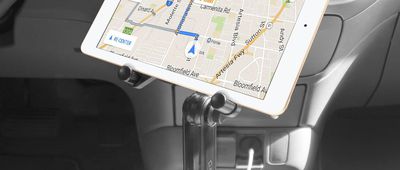Tires look pretty much the same from the outside, regardless of brand, and it can be hard to tell one tire from another. Differences are hidden behind the rubber in the tires' construction and in the invisible compounds used to build them. Tread patterns and other external markers are unique to each model, as well, but most drivers would be hard-pressed to distinguish even these features. Marketing for nearly every all-season discount tire lays claim to the same performance qualities: tight grip on wet, dry, and light to moderately snowy surfaces; excellent water evacuation to resist hydroplaning; responsive and confident handling; and quiet riding comfort.
To get at the full story on the best cheap all-season tires and tire prices, we first consulted expert assessments. Without question, the most comprehensive source of testing for all-season tires is Consumer Reports. While only subscribers have access to the detailed information behind the paywall, the site often publishes free articles that reveal the top finishers in recent testing. Another good source for hands-on quality assessments is Tire Rack, a reputable retail site that conducts rigorous, well-documented tire tests. The only significant downside is that their tests are limited to brands that they carry (although that still encompasses the majority of the discount tire brands sold in the United States). We also consulted reviews for cheap tires online by automotive industry experts, including Car and Driver, Motor Trend, Auto Guide, and others.
Driver feedback completes the picture when it comes to the performance of these tires over the long-term. Tire Rack has by far the most comprehensive database of user feedback and tallies ratings to identify which tires rank at the top in their categories based on these scores — which often represent impressions drawn after tens of thousands or more actual driving miles. We also turned to online consumer reviews at major retailers such as Amazon, Walmart, Simple Tire, Tire Buyer, Discount Tire, and Tire Test, as well as on manufacturers' websites. Repeat purchases are a good marker of buyer satisfaction, and we read many all-season tire reviews for the models on our list from drivers who had replaced worn tires with the same model or an updated version. Many also report buying a set for every car in the family.
Sizing
Advertised tire prices generally reflect the smallest size for each line. Choosing the right tire means first and foremost making sure you get the proper fit. Fortunately, that's as simple as looking at the tires you have currently. All tires carry a size code on their sidewall that indicates the three primary factors by which they are rated. For example, if a tire size is stamped 175/70R13, the first number indicates the width in millimeters across the widest part of the tire. The second number represents the ratio of sidewall height to tire width, while R denotes radial construction (which rules the road these days). The final number is the wheel's diameter in inches. Optionally, some may carry prefix before the tire size, either P for tires intended for passenger car use, or LT, indicating that they are designed for light trucks. Manufacturers specify the recommended tire size for each vehicle on a printed decal on the doorframe on the driver's side. You can also upsize tires (for better looks or performance) or downsize them (for cost savings), but only within strict limits.
Load Index and Speed Rating
In addition to size, all tire sidewalls carry a second rating immediately after the sizing code made up of a number and a letter. For instance, a tire might be marked 82T, with the number standing for the load index and the letter representing the speed rating. Load indexes for most passenger cars and light trucks range from 70 to 126, indicating a maximum passenger and cargo weight of from 739 to 3,748 pounds. Tires are rated for speed according to a letter system. For example, L signifies a maximum speed of 75 mph — most applicable to light trucks and off-road vehicles — and as the alphabet goes on, the maximum speed threshold increases. T-rated tires, which are designed for most family cars and vans, have a maximum sustained speed of 118 mph and Y-rated tires, indicating a tolerance for 186 mph, are a fit for high performance cars. (Oddly, the maximum speed for H-rated tires, 130 mph, places that letter between U and V.) A higher speed rating generally suggests better handling, but high-performance tires (rated V, W, Y, or Z) typically manage those higher speeds at the cost of less effective performance in wintry conditions and, as noted above, shorter tread life.
Treadwear
How well a tire grips the road is largely a function of its tread design and materials. Elevation and climate affect a tire's life expectancy, as do the speed rating, individual driving style (do you corner aggressively or take it slow and steady?), and maintenance (are those tires inflated properly and rotated/aligned on schedule?). Regardless, drivers rightly expect tires to last for thousands and thousands of trouble-free miles. Manufacturers provide a limited treadwear warranty for each of their tires, which is a rough estimate of how many miles a tire can roll under optimal conditions before the tread wears down. It's worth paying attention to the tire's estimated tread life, because a slightly pricier model could yield savings by lasting longer than the cheaper alternative. Keep in mind also that while replacements may be offered (on a prorated basis) for tires that don't meet the thresholds specified, collecting on these warranties is often a tricky business: Most manufacturers specify that the tread must have worn down to 2/32 of an inch before reaching the warrantied mileage, and the driver must prove the tires have been maintained according to manufacturer guidelines.
Handling, Traction, and Braking
To evaluate car and truck tires, professional automobile reviewers put vehicles through rigorous maneuvers on test tracks designed to mimic real-world driving conditions in dry, wet, and wintry weather on a variety of surfaces, ranging from pristine four-lane asphalt highways to bumpy single gravel lanes. Experts assess how responsive a car is in emergency situations such as avoiding obstacles that appear suddenly in the driver's path, emergency braking from 50 to 60 mph, and how well tires resist hydroplaning — or losing contact with the pavement — when you hit a patch of water on the road. They also test how well the vehicle clings to the pavement when taking turns at high speed. All of the tires we recommend earn top marks from pros for handling under typical driving conditions.
Particularly concerned consumers might also look to the UTQG grades embossed on a tire's sidewall for an "official" assessment of its abilities. The Uniform Tire Quality Grading System established by the National Highway Traffic Safety Administration is a system made up of three measures of tire quality: treadwear, with a baseline of 100; traction, with a scale of AA, A, B, or C; and temperature resistance, with a scale of A, B, or C. The grades, are determined by the manufacturer based on specific test criteria. Critics of the system argue it lacks precision and fails to provide consumers with truly meaningful information. Still, UTQG ratings can be helpful when comparing the relative strengths and weaknesses of different all-season tires from the same manufacturer. For example, the useful life of a tire with a treadwear rating of 400 theoretically should be twice as long as a tire with a rating of 200.
Fuel Economy
A tire's rolling resistance influences gas mileage. All tires create friction where the tire tread meets the road surface, largely based on how large the contact area is, the tread design, and the tire materials. As a result, a vehicle must expend a certain amount of energy to overcome this friction as the car travels, affecting fuel economy. Many hybrids and some sedans come equipped with special low rolling resistance tires, and manufacturers are now making a point of designing tires to increase mileage per gallon. Some testers assess tires' fuel efficiency by measuring fuel use over a test period for the same vehicle outfitted with different tires on identical test courses. Others, such as Consumer Reports, measure it using test equipment, such as a dynamometer.
Road Noise and Ride Comfort
No matter how well insulated your vehicle is, the tires will transmit some noise from the pavement to the passenger compartment. How much you'll hear depends not only on the materials used in the construction of the tire but the road itself and whether it's made of concrete or asphalt. Likewise, some tires are better than others at absorbing the vibration and bumps from uneven road surfaces. The better they are, the smoother your ride will be. Both of these factors are highly subjective.



















